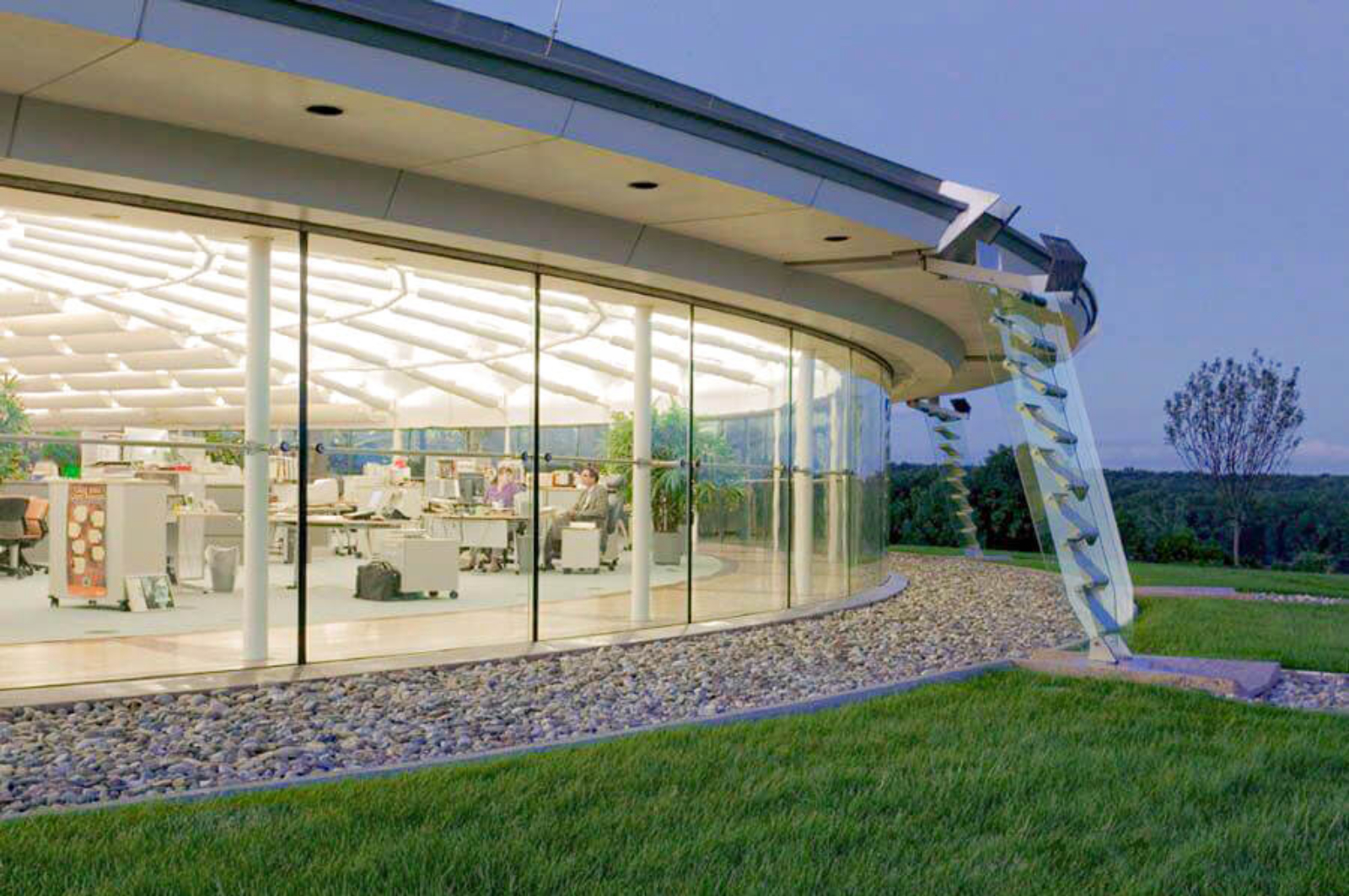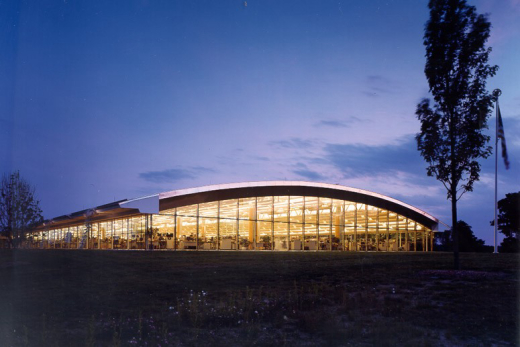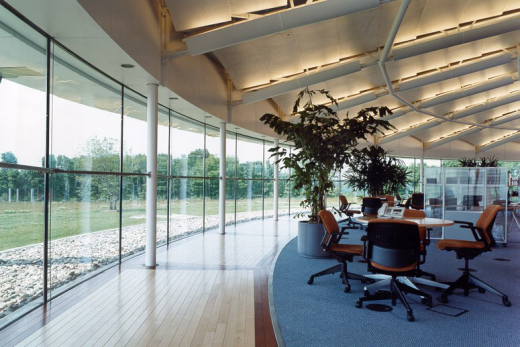The 80,000-square-foot headquarters of Timex, the iconic American Watch company, designed by Fletcher Thompson, Inc., and opened in 2001, is under threat of demolition. The multiple award-winning building combines modern design, open floor plan democratization, and blends into the natural landscape.
History
Established in 1854 as the Waterbury Clock Company, in Waterbury, Connecticut, known as “Brass City.” The company mass-produced clocks that were affordable for every family. By the turn of the century, inexpensive pocket-watches were being sold to millions. Fifteen years into the new century, the wristwatch was the primary method of telling time and the primary product the company made. In 1942 the company retooled to become an important defense contractor making timed bomb fuses and moved to neighboring Middlebury, Connecticut.
After the war effort, watchmaking resumed, and Timex established itself as one the few American companies that consistently remained in business for more than 170 years. At its height, Timex was the largest selling watchmaker in the United States. Its tag line: “Takes a licking and keeps on ticking,” endures to this day. Timex was a mainstay of American culture for many of the decades in the 20th century by capitalizing on technical trends in both manufacturing and marketing. It was one of the earliest adopters of television advertising and participated in joint marketing with many of the major consumer brands and celebrities including Disney and Bob Hope. The company prevailed over the technological and competitive challenges in the consumer retail sector throughout the decades by designing affordable analog and digital watches. By the 1990s, Timex was the only surviving independent watch manufacturer in the United States. Today, the company manufactures luxury watch brands such as Versace, Ferragamo, Missoni, as well as its Timex brands watches, leveraging the timepiece as a fashion accessory movement.
Timex Campus
The two-story, 85,000 square foot building is an excellent example of 21st-century corporate architecture, constructed as an administrative and design center for the international watchmaking company. Fletcher Thompson, Inc., designed the building, and Jack Curtis + Associates rendered the landscape plan and design. The building features a long rectangular plan with convex south façade; a vaulted dome roof with oculus; and walls of transparent insulated glass, which allow for a panoramic exterior view of the site and picturesque environment. Constructed to match the contour of the site’s natural drumlin, or ridge, the lower level of the building with main entrance is set 15-feet below grade. This allows for the building’s low profile and reflective exterior wall-glazing system to appear as an organic element part of the surrounding natural landscape, disguising the building as a one-story structure from most vantage points.




